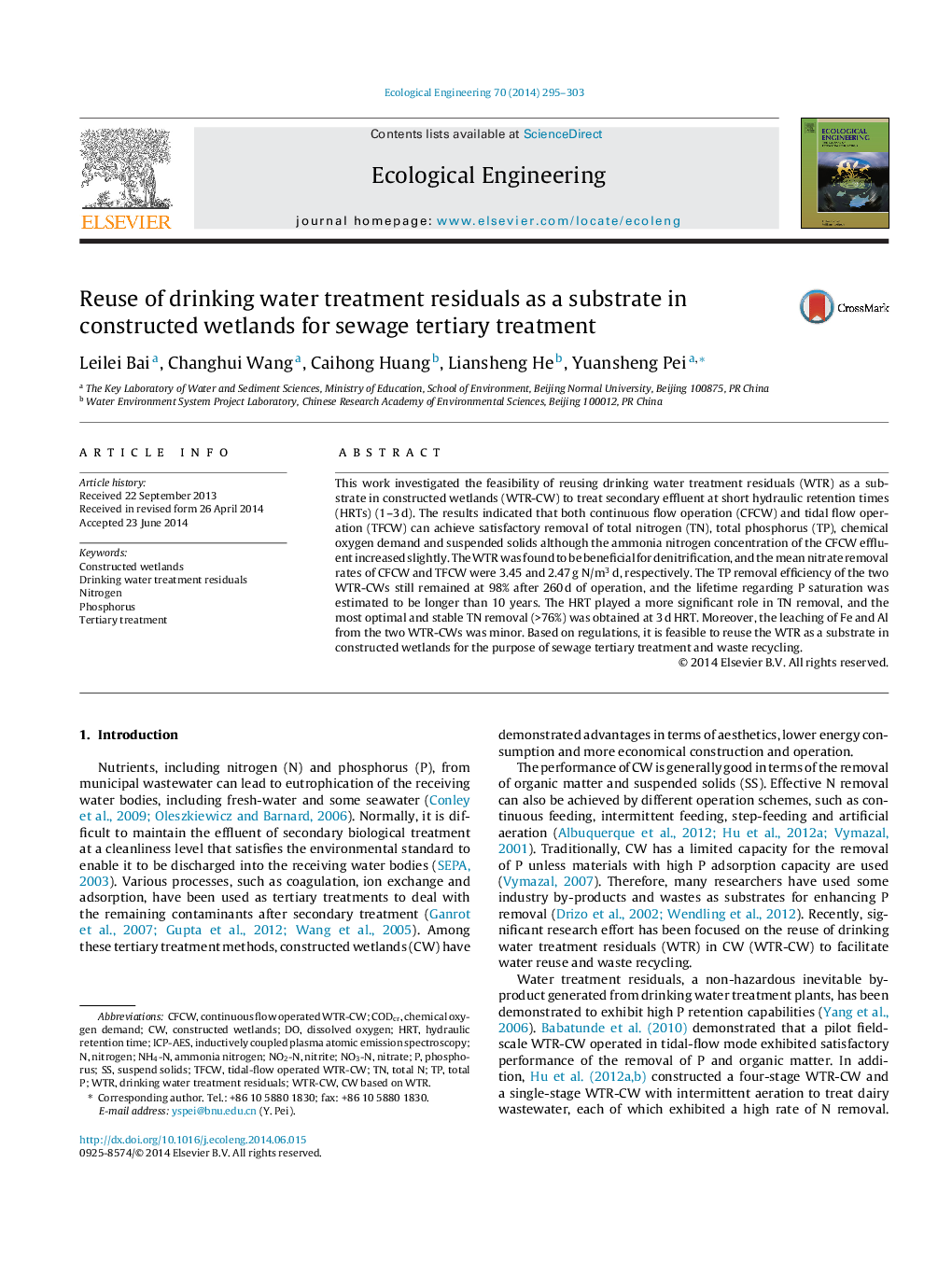| Article ID | Journal | Published Year | Pages | File Type |
|---|---|---|---|---|
| 6302172 | Ecological Engineering | 2014 | 9 Pages |
Abstract
This work investigated the feasibility of reusing drinking water treatment residuals (WTR) as a substrate in constructed wetlands (WTR-CW) to treat secondary effluent at short hydraulic retention times (HRTs) (1-3Â d). The results indicated that both continuous flow operation (CFCW) and tidal flow operation (TFCW) can achieve satisfactory removal of total nitrogen (TN), total phosphorus (TP), chemical oxygen demand and suspended solids although the ammonia nitrogen concentration of the CFCW effluent increased slightly. The WTR was found to be beneficial for denitrification, and the mean nitrate removal rates of CFCW and TFCW were 3.45 and 2.47Â g N/m3Â d, respectively. The TP removal efficiency of the two WTR-CWs still remained at 98% after 260Â d of operation, and the lifetime regarding P saturation was estimated to be longer than 10 years. The HRT played a more significant role in TN removal, and the most optimal and stable TN removal (>76%) was obtained at 3Â d HRT. Moreover, the leaching of Fe and Al from the two WTR-CWs was minor. Based on regulations, it is feasible to reuse the WTR as a substrate in constructed wetlands for the purpose of sewage tertiary treatment and waste recycling.
Keywords
Related Topics
Life Sciences
Agricultural and Biological Sciences
Ecology, Evolution, Behavior and Systematics
Authors
Leilei Bai, Changhui Wang, Caihong Huang, Liansheng He, Yuansheng Pei,
